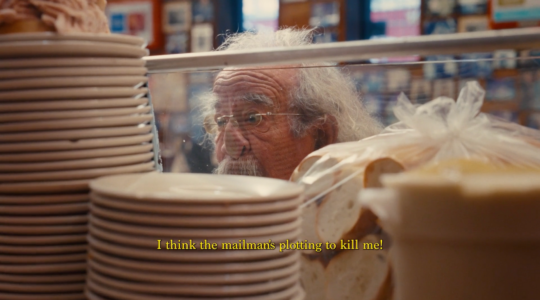If they build it, who will come?
That seems to be the high-stakes, $20 million roll of the dice Lincoln Square Synagogue is prepared to take as its membership will soon vote on a plan to tear down its famous ìshul in the roundî and erect what would be the first new synagogue building on the West Side since, well, Lincoln Square itself, in 1970.
Scott Liebman, an LSS vice president, said, ìThe idea is to take advantage of the value of our real estate and our air rights and see if we can create dollars out of that to create a new facility. The other option [if no sale goes through] would be to fix what we have.î
Others have suggested that Lincoln Square is also perhaps trying to regain some of the luster it has lost, along with membership, since the departure of Rabbi Shlomo Riskin and a subsequent inability to keep a replacement.
From Rabbi Riskin, who departed in 1983 for the Israeli town of Efrat, to Rabbi Shaul Robinson, who assumed the pulpit last month, LSS has had eight rabbis in 22 years, including interim rabbis who officiated for significant periods of time. Additionally, Rabbi Herschel Cohen, associate rabbi for several decades, died in 2000, taking much of the shulís pastoral continuity and institutional memory with him.
Officials at Lincoln Square have sent shul members a detailed letter about the new building. They suggest using the $19.7 million proceeds from a possible sale of the current shul, and another $1.4 million from additional air rights, to erect a new structure one block away at approximately 182-186 Amsterdam Ave., where a liquor store and Korean deli currently stand.
The new LSS would be either a stand-alone synagogue of 30,000 square feet, including a basement, or it would combine that with a 60,000-square-foot office building for an unidentified nonprofit organization.
The building would also incorporate 4,000 square feet of housing for clergy, which would bring significant savings to a shul that is annually spending well into six figures on parsonage, according to a board member.
Selling the old shul before moving into a new one, as is planned to meet the needs of a likely buyer, would require the congregation to find temporary facilities for not only several Shabbat morning minyans but several weekday minyans, between the closing of the old shul in November 2006 and the opening of a new shul a year and a half later.
Rabbi Ephraim Buchwald, founder and leader of Lincoln Squareís Beginnerís Minyan, a model for such services everywhere since its origin at LSS in 1970, is ready to move. ìNostalgia is holding Lincoln Square back. Itís a wreck. Itís only 35 years old but itís like a hundred years, for all the wear and tear.îRabbi Buchwald isnít afraid of temporary facilities. ìHey, weíll meet in my apartment. Maybe weíll meet in yours.î
Jesse Cogan, a board member, said keeping the daily minyan intact is ìcrucial, a key to the ongoing strength of the shul. Itís a very popular minyan, attended by people from other shuls. Thereís day-to-day camaraderie, thereís good davening, some call it ëthe Power Minyan.í Our interim needs have to accommodate not only the weekend but the weekday.îMany at LSS seem discouraged about the costs of repairing the current synagogue on Amsterdam Avenue between 69th and 70th streets. Several officers of LSS told The Jewish Week that the shul ìhasnít been well maintained,î with leaks in the roof, elevator problems, air-conditioning and heating breakdowns and an inability to conform to the Americans With Disability Act.
According to one LSS insider, ìWhatís wrong with the building? Everything. Itís falling apart. It doesnít ëmeet codeí on anything.îLiebman, the LSS vice president, pointed out that the current building ìdoesnít lay out well because it is really two buildings that donít connectî: one building containing the synagogue and an adjacent annex that was previously a branch of Chase Manhattan Bank.ìThe bank has never been connected to the main shul,î said Liebman, noting that a walk outdoors is required to get from one wing to the other.
Support the New York Jewish Week
Our nonprofit newsroom depends on readers like you. Make a donation now to support independent Jewish journalism in New York.
The new buildingís plan provides for a catering facility with a 500-person capacity, some 200 larger than the current ballroom. According to LSS officials, that would make it the largest non-hotel kosher catering venue in Manhattan, a potential source of considerable revenue as well as possible opposition from local community groups.
While there will be more seats for catering, there doesnít seem to be a need for more seats for a congregation that has gotten smaller over the years. As recently as the 1980s, LSS was standing room only on Shabbat mornings, with people even sitting in the aisles. Now an LSS board member estimates that ìitís empty, maybe 65 percent full on Shabbos morning.îMembership is said to be 600 to 700 families, with Liebman saying, ìI suspect itís down from what it used to be,î although he refused to call it a downswing. ìWe might very well be the only 24/7 shul on the West Side, if not the city,î he said. ìThereís something going on almost all the time.î
But others on the LSS board told The Jewish Week that 24/7 only has meant higher costs for electricity, security and structural strain.One longtime congregant cited ìrabbi fatigueî as a spiritual problem more threatening than structural problems. ìWe canít keep a rabbi. Anyone can get divorced,î said the congregant, ìbut if youíve been married eight times, maybe the problem is you. Maybe this shulís like those people who want an expensive face-lift because theyíre tired or depressed, as if a new face or new building will make us feel better about ourselves.îA key to the future of LSS is the recently hired Rabbi Robinson. Described by one congregant as ìrumpled but extremely personable and a good speaker,î Rabbi Robinson, 38, a native of Scotland, was ordained in Efrat, where he studied under Rabbi Chaim Brovender and Rabbi Riskin. He previously served as the rabbi for Jewish students at Cambridge University and at Londonís Barnet Synagogue.ìEveryoneís assumption is that [the LSS uncertainty] will be awfully challenging, a bad situation for a new rabbi,î Rabbi Robinson told The Jewish Week. ìBut a building project can galvanize a community. It can bring excitement.îWhat keeps a shul together, he said, ìis more than the thickness of the carpet underfoot,î but the texture of relationships. A shul thrives if itís ìwhere you feel at home, where you know the guy next to you, and when thereís a simcha or tzuris, youíre part of their lives and theyíre part of yours.ìI donít mean to be dismissive of concerns,î the rabbi continued, ìbut I donít believe there are insurmountable challenges or that weíll fall apart if we have to go off site. A shul thatís building a future is a special place.î n
The New York Jewish Week brings you the stories behind the headlines, keeping you connected to Jewish life in New York. Help sustain the reporting you trust by donating today.




